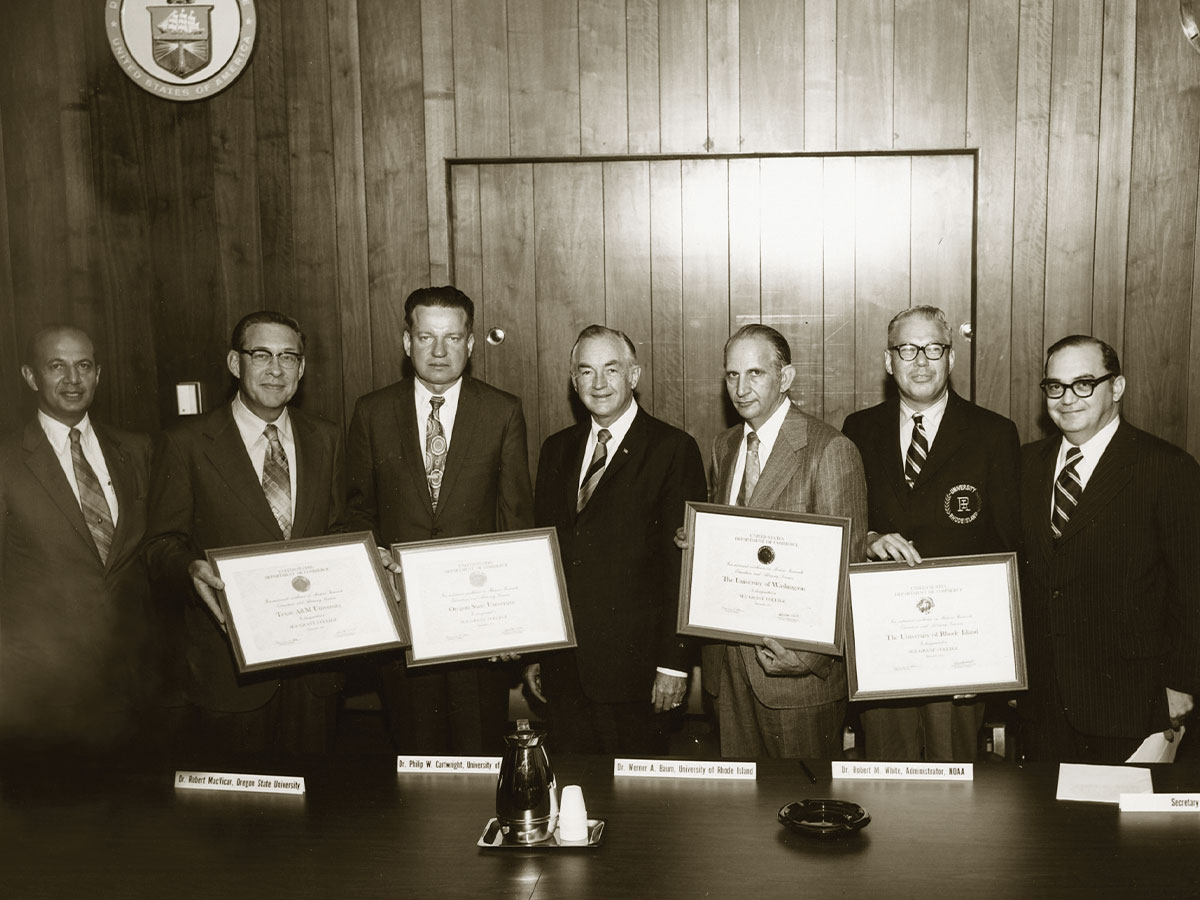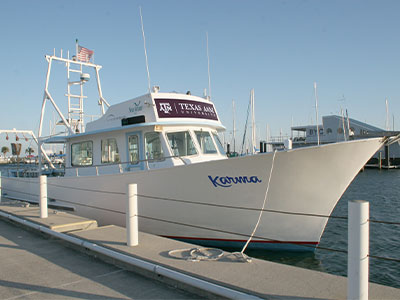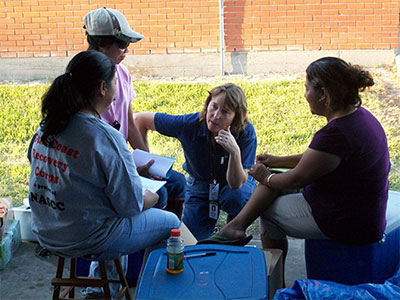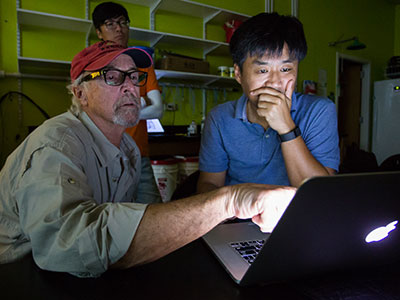Texas Sea Grant Celebrates 50 Years of Science and Stewardship on Sept. 17
Texas A&M University achieved formal designation as a sea grant college 50 years ago.
Sep 14, 2021

On Sept. 17, the Texas Sea Grant College Program at Texas A&M University will celebrate its 50th anniversary. For half a century, the program has supported science and stewardship on the Texas coast by funding coastal and marine research and bringing data-driven resources to coastal communities through its coast-wide extension program.
Texas Sea Grant uses research, outreach, and education programs to benefit the citizens, businesses, and communities of Texas. Its mission is to improve understanding, wise use, and stewardship of Texas’ coastal and ocean resources.
This unique program unites the resources of the federal government, the State of Texas, industry, and universities across the state. It is funded through the National Sea Grant College Program — part of the National Oceanic and Atmospheric Administration (NOAA), the Texas Legislature, and Texas A&M University.
Sea Grant History and Texas A&M University’s Sea Grant Designation
The National Sea Grant College Program modeled its structure after the land grant college program. Established in 1862 by the Morrill Act, land grants allowed states to develop “agriculture and mechanical” colleges. Over time, land grant colleges developed research, extension, and education efforts.
After its inception in the early 1960s by inventor and scientist Dr. Athelstan Spilhaus, the Sea Grant concept quickly gained momentum among academics and influential politicians. Public support and the success of the land grant program inspired passage of the National Sea Grant College Act of 1966, signed into law by President Lyndon B. Johnson.
Texas A&M's budding program in oceanography and success as a land grant institution made it the natural choice for Sea Grant designation. According to Earl Rudder, former president of Texas A&M, “Designation of Texas A&M recognizes the breadth and quality of the university’s programs in oceanography, coastal engineering, food resources, and related areas.”
A significant factor in Texas A&M’s designation as a Sea Grant college was the College of Geosciences, particularly the Department in Oceanography. Established in 1949, the department assisted the State of Texas with emerging challenges in the Gulf of Mexico.
The mission and aspirations of the Sea Grant College Program aligned with the efforts of the College of Geosciences and made the college the ideal home for Texas Sea Grant, where the program resides to this day.
In 1968, the National Science Foundation awarded Texas A&M a $475,000 grant to establish a Sea Grant Program. Then, in 1971, Texas A&M became one of four universities (in addition to Oregon State University, University of Rhode Island, and University of Washington) to be officially designated a Sea Grant University.
Today, there are 34 Sea Grant programs across the United States and its territories.






Serving Texas, Science, and Stewardship
Throughout its history, Texas Sea Grant has funded faculty at Texas universities to study numerous issues significant to the Texas coast and its people. These topics include droughts, floods, fish kills, shrimp diseases, marine debris, oil spills, oyster reef collapse, sea turtle deaths, hurricanes, ocean acidification, and many other emerging issues of concern to Texas coastal communities and economies.
“The early years of Texas Sea Grant focused on building capacity in Texas university academic programs to develop undergraduate and graduate teaching programs and support seminal research,” said Dr. Pamela T. Plotkin, director of Texas Sea Grant. “This grew the research enterprise in the state and launched careers of faculty and trained graduate students in various disciplines from coastal engineering to marine aquaculture.”
Ultimately, the research Texas Sea Grant funds produces necessary information to create tangible solutions, which the program actively helps Texans implement through our outreach and education programs.
50 years after its founding, Texas Sea Grant continues to uphold its commitment. “As we look forward to the next 50 years, Texas’ needs will continue to evolve and so will our adaptation strategies, but our purpose will remain the same,” said Plotkin. “Texas Sea Grant will still look to challenges with optimism and create opportunities that better the lives of Texans.”
Celebrating Sea Grant
The history and current works of Texas Sea Grant are on display in the George Bush Presidential Library and Museum. Information on re-opening and hours of operation can be found at bush41.org.
Anyone interested in learning more about the history of Texas Sea Grant can read the latest issue of Texas Shores magazine and look for #TXSGhistory on social media. Additionally, Texas Sea Grant will host a special Birthday Celebration Seaside Chat webinar on Sept. 17 at 3 p.m. via Zoom, recounting its history with long-time staff. Attendees can register online at tx.ag/TXSGseasidechats.
To celebrate the program’s birthday, Texas Sea Grant asks that individuals support the Texas coast by choosing sustainable seafood, respecting local wildlife, reducing the use of plastic, and making safety a priority at the beach.
Media Contact:
Sara Carney, Communications Manager, Texas Sea Grant, scarney@tamu.edu, 713-435-9585

